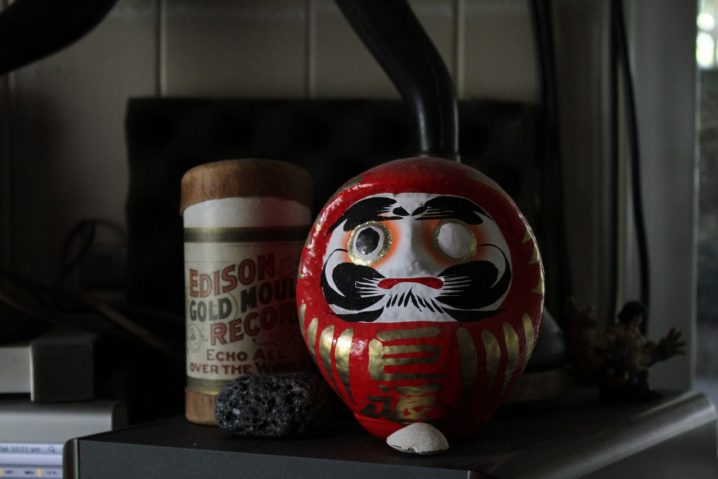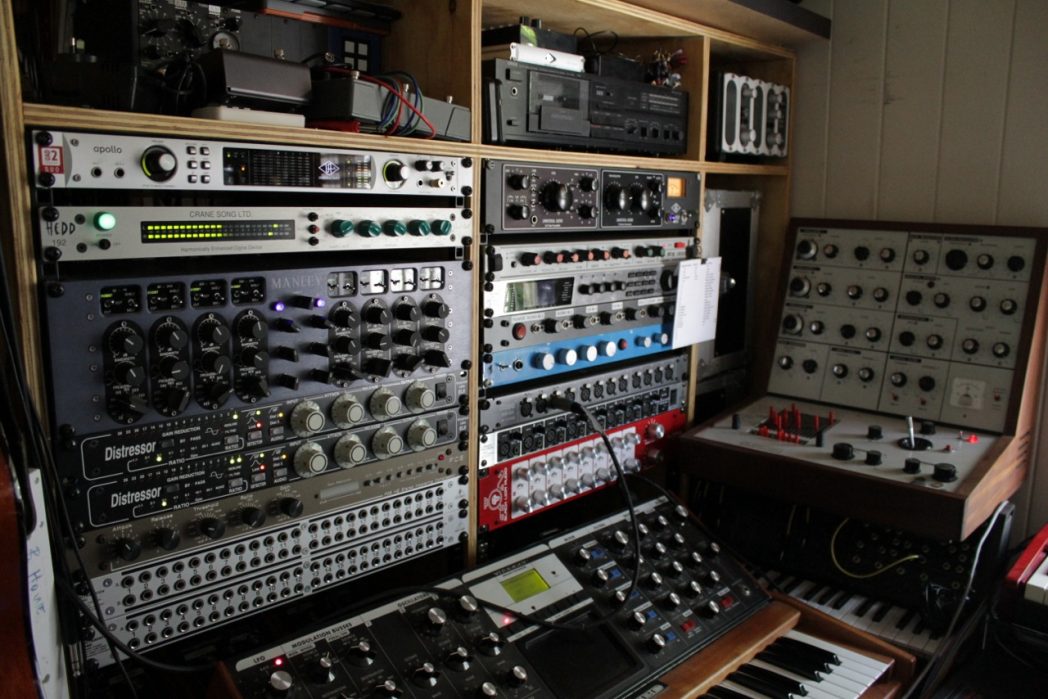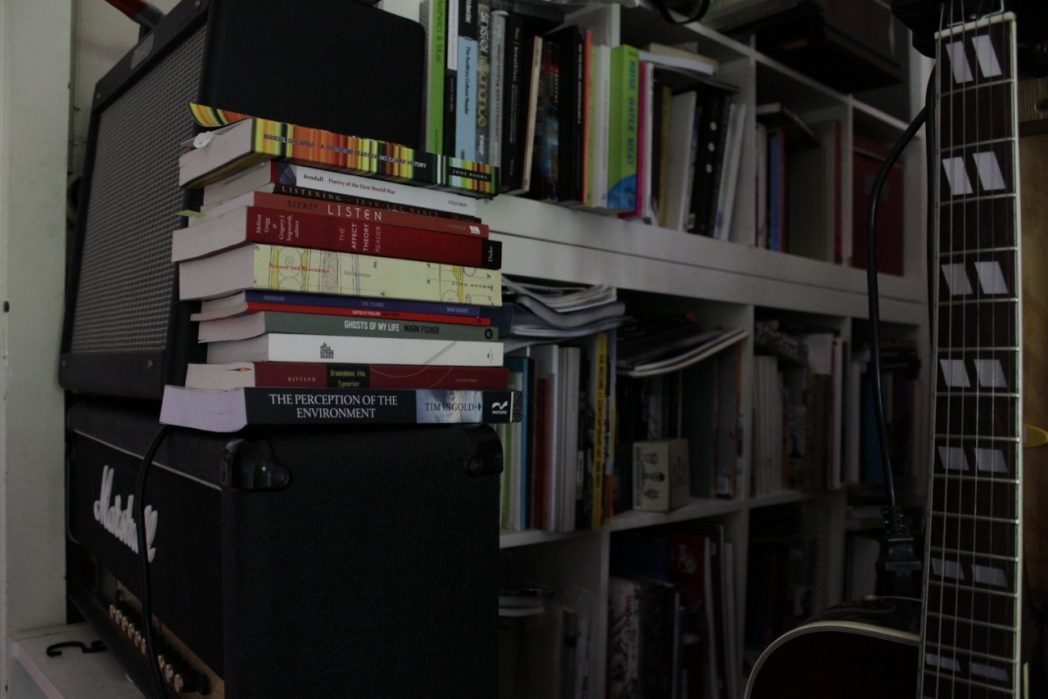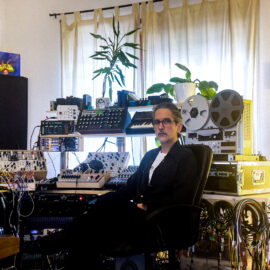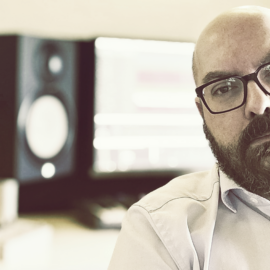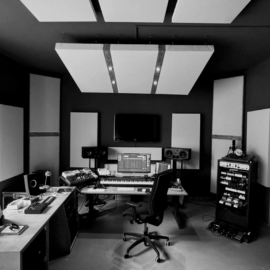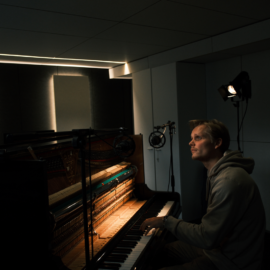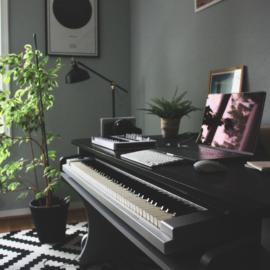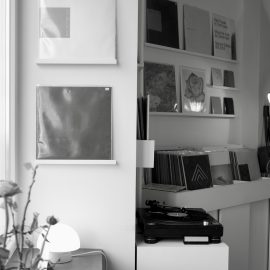I like the notion that everything cycles, everything flows with a kind of asynchronous togetherness.

Lawrence English is an Australian composer, media artist, and a curator. Working across an eclectic array of aesthetic investigations, English’s work prompts questions of field, perception and memory. His very own Room40 label is responsible for introducing our ears to the sounds of Tomasz Bednarczyk, Oren Ambarchi, Taylor Deupree, Christopher Willits, Ben Frost, Janek Schaefer, Chihei Hatakeyama, Pimmon, Rafael Anton Irisarri, and many, many others… English’s own work has appeared numerous times on Headphone Commute, and inevitably ends up as some of our all time favorite, prominently turning up on our Best of the Year lists, so it’s no wonder that we’re extremely excited to take a peak into this master’s studio today. Enjoy!
Lets start at the very beginning. Can you tell us how you got involved in composing, and what was your very first piece of gear?
I come from the generation just before audio on the desktop was really possible. The first pieces of noise and music I made were on hardware, using pedals and other bits and pieces. That said, I recognise that these were just sketches, not even really anything more than ideas. I think with audio on the desktop, using programs like ACID and then later some of the early mac applications for OS8.6 on my first laptop, that was really the first time I felt I could really chew into sound. I could make it something that felt contoured and reflecting the way I wanted to sound… partially if not fully. I was playing in bands in the 1990s, and some of these had pretty strong ties to electronics. One was an industrial band, that echoed Ministry I suppose. I worked in the studio with the singer a fair bit making a record for a couple of years and that was where I started to get into how collaboration with sound could work. I then worked with some guys who were exploring low key instrumental hip-hop, strongly influenced by folks like DJ Krush, so that opened up some other avenues to think about filters and envelopes etc.
The first piece of serious gear I bought was an Akai S-900 sampler. It was a great tool and showed me some pretty hefty limitations that eventually became the basis of what I tried to fight against in relation to how I make work. I used that sampler in conjunction with early versions of ACID and other hardware like the frostwave filter, cassettes and other pedals. It was all very adhoc and makeshift. Using whatever I could get my hands on. It took a while for all those experiments to forge into anything really meaningful. But having that time was really wonderful. A chance for error after error.
How many different studio iterations have you gone through, and what does your final setup look like right now?
I’m not sure there’s ever a final iteration. I guess as your work progresses through various phases and interests that is reflected in the kinds of spaces and equipment you want to explore. I know for me now, I do a lot of recording in various studio spaces and environments, depending on what kinds of instruments I am working with. For example, Wilderness Of Mirrors used pianos and organs I recorded in various places in Australia. The next record, which I am starting to think more seriously about at present is going to be based around a lot of orchestral ideas, so I imagine that’ll require recording in a bunch of specific spaces.
The studio I have here is however pretty much perfect for me. It’s a good mix of software and hardware that I find relatively limitless in terms of what it can offer. I’ve spent a good deal of time trying to strike a balance between enough, but not too much gear. I now have what I consider to be a very satisfying mastering chain and I use it a lot for the shaping of sound too. I think it’s easy to come down with a bad case of gear lust, but really you don’t need a lot to make great work. All you really need is ideas!

Tell us about your favorite piece of hardware.
OK, as of today, this might well be my Mexican Death Whistle. These instruments were used by the Aztecs in a variety if settings, during human sacrifice to guide the souls of the sacrificed to the underworld and also in battle. They sound like the soul screaming as it’s chased out of the mortal body. Some people say it sounds like the scream of 1000 corpses. It does! I am truly haunted by this instrument. It has an unerring quality that is quite unlike anything I have ever experienced. It somehow taps into a sense of sound as beyond that of human comprehension. This idea of the mystic or the notions of sound as supra-human in their possible meanings, is something we tend to overlook these days. I have had a number of experiences in my life, listening to sounds in environments that have haunted me in differing ways. I think to be haunted by sound is one of the truly magic parts of being alive, and being human.
If we’re talking pure gear porn, then I would have to send a love letter to my Massive Passive. That thing is like pure auditory heaven.
And what about the software that you use for production?
Most of what I do is process-oriented, in that the way a sound starts its life in a composition is not generally how it ends up. I enjoy drowning elements in various processes and exhuming the remains. This kind of iteration, erasure and deconstruction is at the heart of a great many records I have made.
To this end, I find that quality sound transformation processes are vital. UAD’s plug ins are quite often mind blowing. I use them extensively and I find some of their emulations better than the hardware in some ways. The hardware perhaps has more idiosyncrasy, but UAD’s plug ins have a very strong ability to create those same sensibilities and qualities that hardware possesses. I have a great deal of time for their outstanding software and hardware!
Is there a particular piece of gear that you’re just dying to get your hands on and do you think one day you’ll have it?
Actually, not really. It’s funny, but I feel as of now I have pretty much everything I need to make the work I want to make. That’s not to say a Buchla Music Easel wouldn’t go astray or a few more modules for my modular synth system or a baby grand piano… maybe a shadow hills compressor…. but honestly I’m really fortunate to have a collection of equipment here I feel I can grow with.
The trick really is drilling into something, knowing what it can be pushed to do or pushed into doing. You need to push at the edges, that’s where the curious side effects and unexpected gold come from. The chance for almost intuitive or mindless play is sometime where the greatest potentials can be realised.
Can you please share some aspects of sound design in your work?
I think there’s two kinds of music, let’s think of them as schools of thought. One is the school of rhythm and melody. This school is instantly familiar and we know we can easily love what it represents. The other school is that of harmony and pulse. This school is less familiar in the accident. That said it’s no less potent. It merely requires us to apply ourselves and recognise the power of how certain ways of approaching sound and music might be executed for effect. I am a student at the school of harmony and pulse.
I like the notion that everything cycles, everything flows with a kind of asynchronous togetherness. It’s merely a matter of what perspective you take on the materials. All frequencies cycle, but can we make sense of that from every position, no. And that’s the beauty of it. We must move ourselves, we must invest our ears and bodies if the ultimate effect is to be revealed to us.
The ease of the earworm is seductive, it’s sweet, easy and instantly gratifying, but the encompassing nature of this other approach to sound and music is what I find powerful. It asks for more, it asks for agency of sender and receiver and the pay off is huge! It’s about transcendentalism and the chance to traverse into another possible you, one not always that you are aware of, but one that remains very much there, just waiting to be explored should the right situations present themselves.
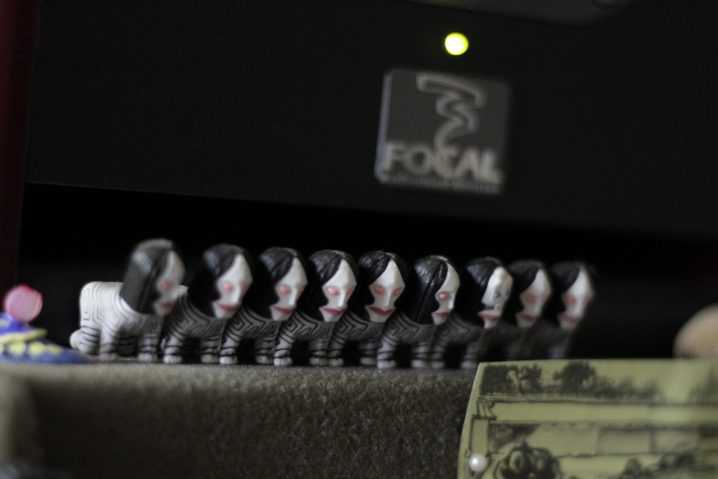
Any particular new techniques that you tried out for your new album?
On Wilderness Of Mirrors, I really wanted to explore a range of new terrain and that informed a lot of the processes and approaches I tried to execute. I was interested in that point at which source becomes unclear and in the case of this record where acoustic instruments took on distinctly electronic qualities. So a lot of the time, if I was recording an acoustic instrument, say a piano I wanted to present a particular perspective on that instrument. So to that end I spent a lot of time trying to frame the inputs as they come into the record. The first tone of the record is actually a piano being played by an ebow. I close miced that and also gained up it tremendously so that the input was red hot, roasted in harmonic distortion.
What does your live setup look like, and what do you bring with you when you go on tour?
I have a not so formal rule for touring, if you can’t carry it, don’t bring it. Especially flying in and out of Australia, any kind of excess baggage or the like is just going to completely bankrupt you. That said, I do have very specific backline and PA requirements and that’s become more and more central to reaching certain kinds of situations and phenomena in concert.
I basically run Ableton live, with a fair amount of internal processing and routing. Then on top of that I run a couple more aux channels of processing to have some more variation and possibility to augment the sound in real time. I like to think of concerts as kind of dropping people into the middle of an ocean, sometimes you’re underwater and the light at the surface seems distant and unreachable, sometimes there’s huge waves taking you up and dropping you but almost always we end up on the shore by the end of the show.
What is the most important environmental aspect of your current workspace and what would be a particular element that you would improve on?
I think studio spaces are of two kinds. The first is a studio space that’s like a hotel room, utterly function, sometimes fun and interesting, but kind of ubiquitous. It serves a denomination of musicians equally. The other kind of studio is more akin to what I have built which is a relatively personal work space, an enclave, which fits very neatly into the kinds of ways I prefer to work. The space is not for everyone’s workflow, but for mine it tends to suit well.
Usually before each record I tend to redraft the layout and routing of parts of the studio. This tends to reflect the kinds of materials I am going to be working on and what processes are going to be happening as part of the record. I have a good deal of outboard gear and that often forms the backbone of a lot of the textural processes for the work. I like the idea of taking a very singular source and just eroding it through very thick processes. So I try and set up situations where that can happen in line with other elements and ideas. I find that overlaying of things in real time often creates opportunities for listening to the fundamental parts of the music in rather specific ways.
At some point in the next few years I’ll be building a new studio space, and I think that’ll be great in terms of creating more space in which I can record live instrumentation. That’s about the only real shortcoming of the current situation.
What can you tell us about your overall process of composition? How are the ideas born, where do they mature, and when do they finally see the light?
I’m very much a process driven writer. I tend to frame all the work I do within a kind of contextual structure that gives the music a sense of direction, at least for me. So often it’s ideas, not necessarily musical ones, that start off the process of making work with sound. Sometimes it’s a particular sound experience or place, other times something completed unrelated to anything sonic. I tend to start with a very skeletal outline and then there’s a lot of iteration as the piece evolves. Through the process of iteration there tends to be a kind of harmonic layering that ends up quite rich really. It also means that what might start as rhythmic tends to become more textural as it evolves over time.
Generally I am working slower than I did say five years ago. I am sure that’s partly to do with the fact that I am more critical for the most part and also there’s probably a lot more commitments and projects that require attention. The label is always a very time consuming beast and my gallery practise too is constantly expanding.

After the piece is complete, how do you audition the results? What are you reactions to hearing your music in a different context, setting, or a sound system?
I think there’s a huge difference in what I want to achieve in the studio and on stage. The core materials might be the same, but how they are listened to by an audience and what is possible about that listening are two very different things. For me, the live sound is very much about the physicality of the sound. The notion that the bodies of all in the concert hall are occupied by that sound. That they are engulfed by these waves of vibration and there’s no way to escape that physicality of the sound. What I particularly like about this is the transition from a kind of ‘listening’ sense to a physical ‘touch’ sense as the sound activates all these parts of your body. There’s something very seductive and intimate about it, and also at times quite confrontational and overpowering. I’ve experienced both ends of that spectrum and that sensation was at the root of a lot of the interests I had for Wilderness Of Mirrors.
Do you ever procrastinate? If so, what do you usually find yourself doing during those times?
It’s funny, I now think of multi-tasking as procrastinating. So if I am not focused on making work, there’s almost always something else to be done. Production duties for the label or emails to reply to, projects or events to be developed. There’s always something that requires attention, so to make space for creating new work is actually something that’s quite a conscious process. If I had to choose a way to procrastinate either of the little people living in the house with us are great to remind you the important stuff is never on the screen in front of you.

What gets you inspired?
There’s not really one answer to this question. I like the idea of ‘reading widely’, so to speak. For Wilderness Of Mirrors, most of the inspiration came from some very serious and frustrating ideological attacks on some issues and peoples here in Australia and elsewhere. That fuelled the record’s sonics for sure. By contrast, The Peregrine which I just re-issued was entirely inspired by the book of the same name by the English author J.A. Baker. The book in a very material way formed the foundation for the record. I used his observations and writings often very directly to shape the compositions.
I think inspiration is very much down to how present you are willing to allow yourself to be at a given time. When you become embedded in something, whether it be a film, book or a landscape, the more you’re able to invest yourself the richer the potential experience you can draw on. That’s not to say incidental moments can’t be fundamentally inspirational, more just to highlight the fact that I sense inspiration is not just a passive experience. It can be very engaged and ultimately it must be engaging.
And finally, what are your thoughts on the state of “electronic music” today?
I think like all music, accessibility has created some genius and some pap. The challenging is for making sure we navigate through those possibilities as best we can. I have to say at times I am overwhelmed by the sheer amount of work that’s being produced and a great deal of it is amazing. Last year, I was really satisfied as a listener as a great many of my friends and peers created records I loved. Ben Frost, Grouper, Xiu Xiu, Blank Realm, Alessandro Cortini and so many others made killer records which I really enjoyed listening to. It’s very satisfying, for me at least, to listen to music from my friends and truly enjoy the work from multiple dimensions and perspectives. I’d be very happy if every year was as solid for listening as last year.
